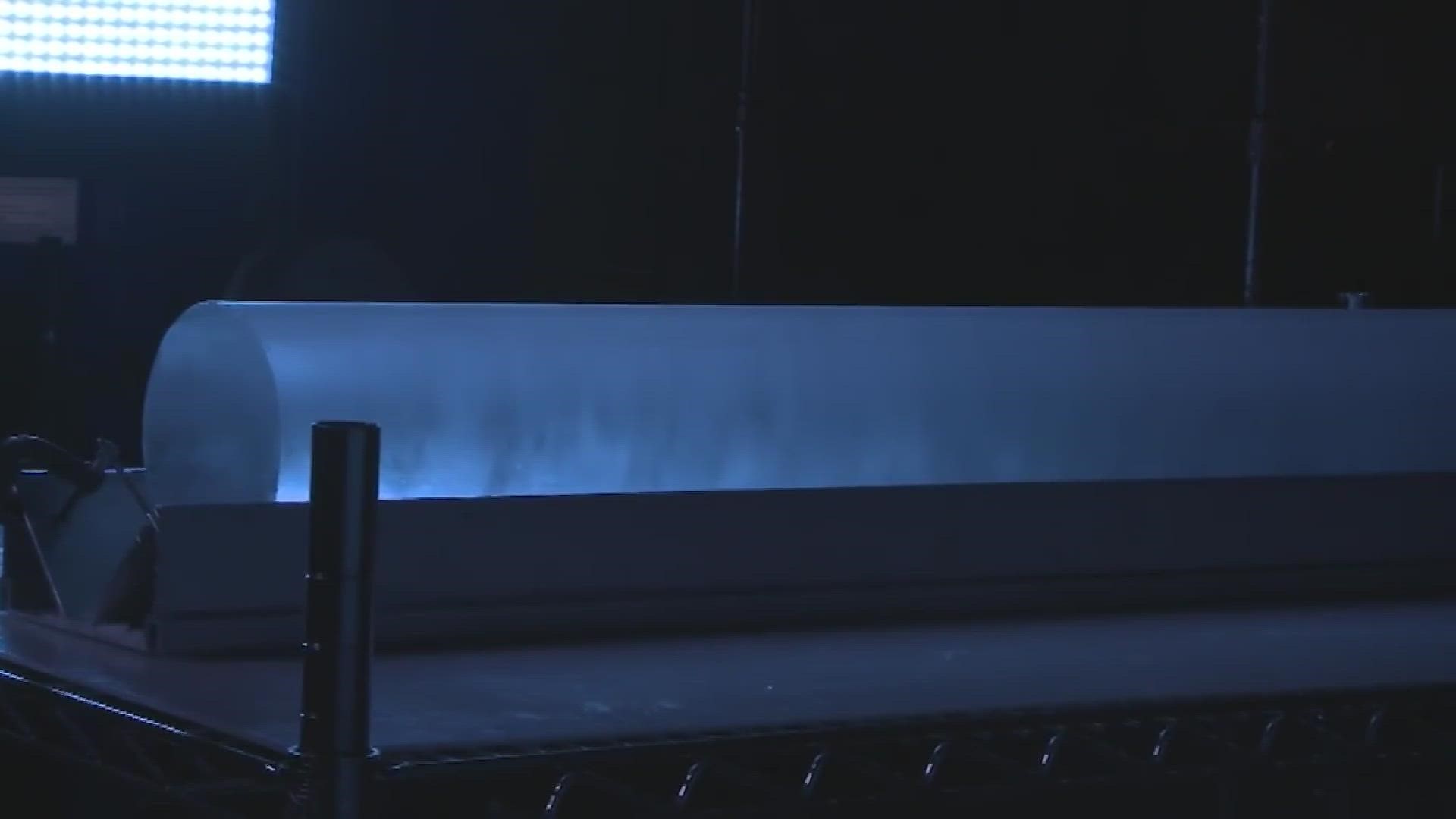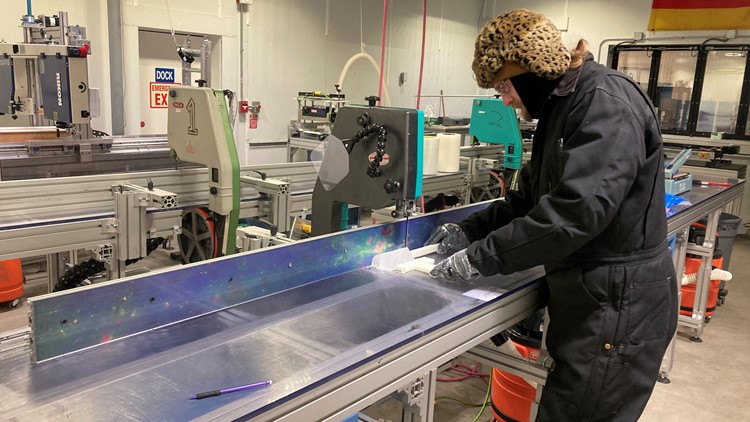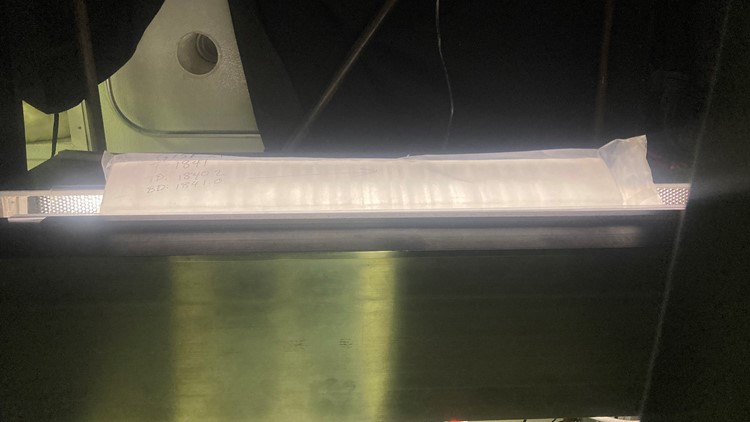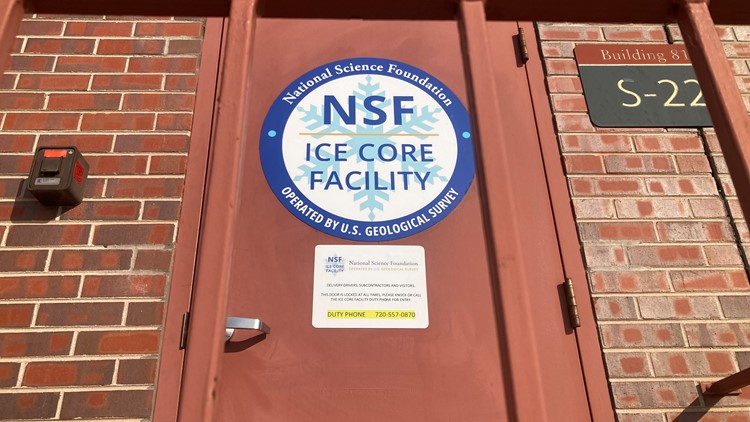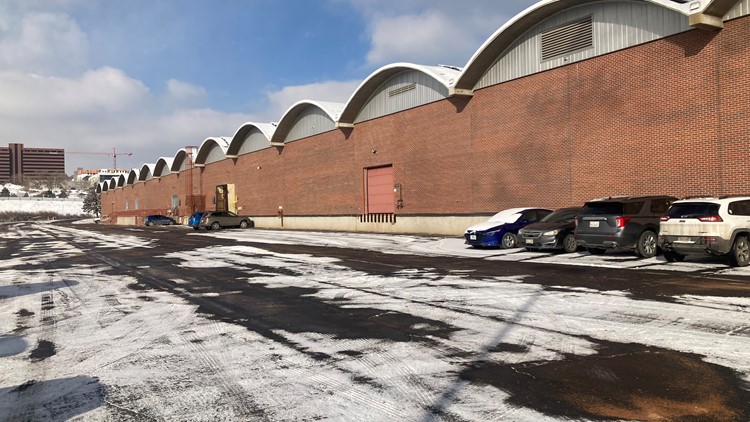LAKEWOOD, Colo. — There is a kind of polar process happening in the parking lots on the Front Range.
Over time, snow turns to ice. And the icier a pile of snow gets, the harder and denser it becomes. Which means the longer it sits, the more energy it will take to melt it.
Those parking lot glaciers have now been sitting around for more than a month. That is a long time but there’s some ice in Denver that formed more than 400,000 years ago.
Samples from Greenland and Antarctica are stored at the National Science Foundation Ice Core Facility at the Denver Federal Center in Lakewood.
“I’ve been doing this for 12 years," said the facilities curator, Richard Nunn. "And it still fascinates me to pull out some of this ancient ice and think of the fact that this was snow that fell hundreds of thousands of years ago, and it hasn’t melted yet.”
Ice core facility in Lakewood, Colorado
He said there are 23,000 meters of ice core samples stored in a warehouse kept at a temperature of -40 degrees. That's both Celsius and Fahrenheit as that's basically the temperature where the two measurement scales meet.
The ice there is called meteoric ice because it's formed by the compression of snow as opposed to the freezing of water. He said over time, the weight of the snow squeezes into material called firn, a styrofoam looking ice that still has quite a bit of air flowing through it.
"Then it's not until you get about 80 to 100 meters below the surface that the pressure is so great that the firn finally compacts into solid ice," said Nunn. "And at that point any of the air moving through it becomes trapped."
Nunn said there’s a history lesson sealed in each ice sample. By cutting into air bubbles that have been frozen in time, scientists can directly measure the atmosphere the way it was long before humans started polluting it.
“There’s no other source that we can go to on the planet to, this accurately, recreate what things like CO2 or Methane levels would have been like 10,000 or 100,00 years ago.”
Nunn said the ice cores are the greatest evidence of the human impact on the climate as the greenhouse gas emissions have about doubled since the time most of the ice cores were formed.
He hopes the ice of yesterday will help inspire a cleaner society today.
And this ancient ice can also help bring perspective to how short winter in Colorado really is. Even this year.
“While it may feel like it has no end in sight because it’s so cold right now, it’s clearly going to warm up in a couple weeks and all that’s going to go away.”
The forecast is calling for a lot of melting to happen over the next seven days, but it may take until spring actually rolls around to melt the glacier-like snow piles that line the parking lots on the Front Range.
SUGGESTED VIDEOS: Colorado Climate
9NEWS+
9NEWS+ has multiple live daily shows including 9NEWS Mornings, Next with Kyle Clark and 9NEWS+ Daily, an original streaming program. 9NEWS+ is where you can watch live breaking news, weather updates, and press conferences. You can also replay recent newscasts and find videos on demand of our top stories, local politics, investigations and Colorado specific features.
To download 9NEWS+ on Roku search for KUSA.
To download 9NEWS+ on Fire TV search for 9NEWS.

